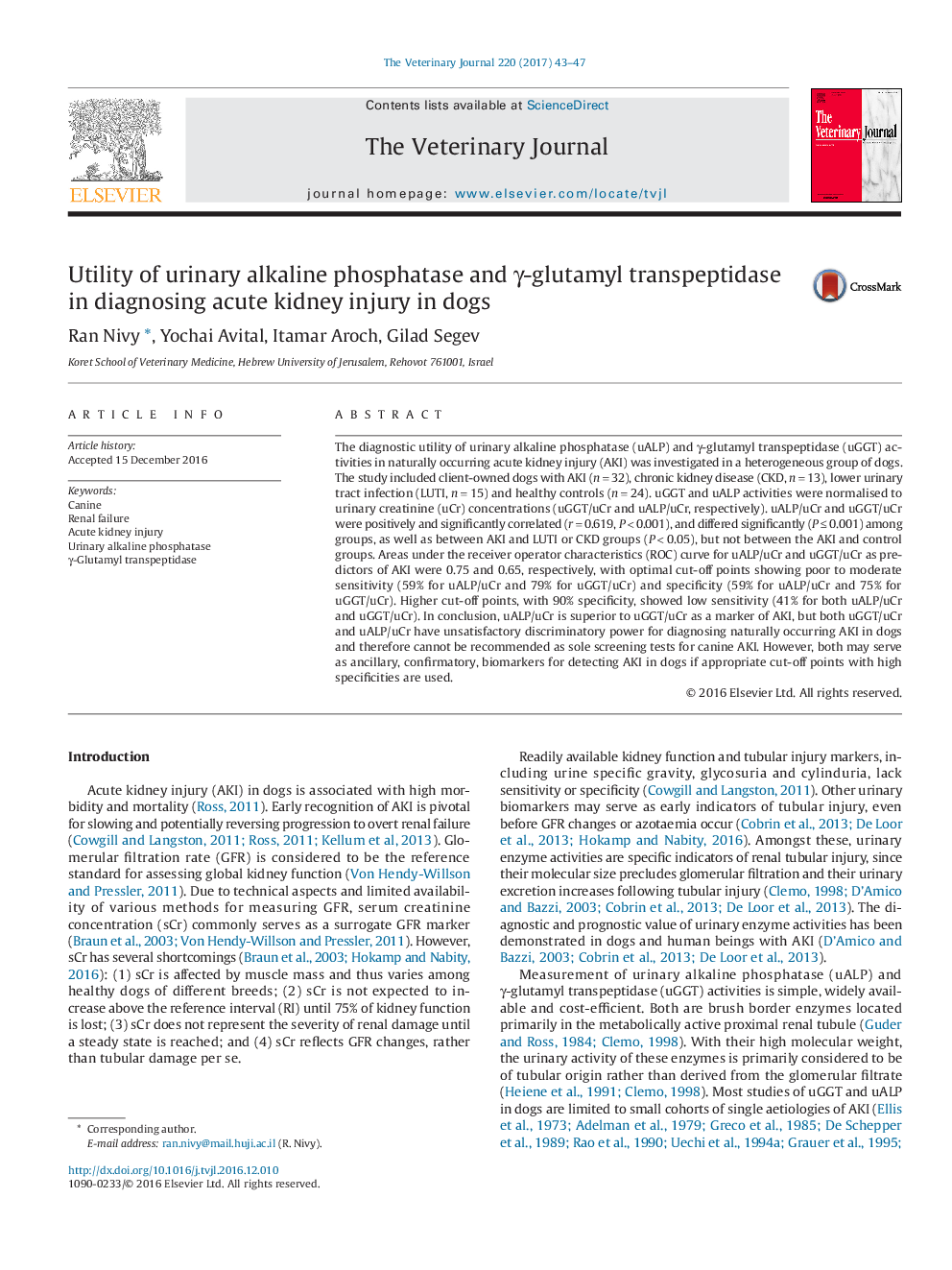| Article ID | Journal | Published Year | Pages | File Type |
|---|---|---|---|---|
| 5544856 | The Veterinary Journal | 2017 | 5 Pages |
Abstract
The diagnostic utility of urinary alkaline phosphatase (uALP) and γ-glutamyl transpeptidase (uGGT) activities in naturally occurring acute kidney injury (AKI) was investigated in a heterogeneous group of dogs. The study included client-owned dogs with AKI (nâ=â32), chronic kidney disease (CKD, nâ=â13), lower urinary tract infection (LUTI, nâ=â15) and healthy controls (nâ=â24). uGGT and uALP activities were normalised to urinary creatinine (uCr) concentrations (uGGT/uCr and uALP/uCr, respectively). uALP/uCr and uGGT/uCr were positively and significantly correlated (râ=â0.619, Pâ<0.001), and differed significantly (Pââ¤â0.001) among groups, as well as between AKI and LUTI or CKD groups (Pâ<â0.05), but not between the AKI and control groups. Areas under the receiver operator characteristics (ROC) curve for uALP/uCr and uGGT/uCr as predictors of AKI were 0.75 and 0.65, respectively, with optimal cut-off points showing poor to moderate sensitivity (59% for uALP/uCr and 79% for uGGT/uCr) and specificity (59% for uALP/uCr and 75% for uGGT/uCr). Higher cut-off points, with 90% specificity, showed low sensitivity (41% for both uALP/uCr and uGGT/uCr). In conclusion, uALP/uCr is superior to uGGT/uCr as a marker of AKI, but both uGGT/uCr and uALP/uCr have unsatisfactory discriminatory power for diagnosing naturally occurring AKI in dogs and therefore cannot be recommended as sole screening tests for canine AKI. However, both may serve as ancillary, confirmatory, biomarkers for detecting AKI in dogs if appropriate cut-off points with high specificities are used.
Related Topics
Life Sciences
Agricultural and Biological Sciences
Animal Science and Zoology
Authors
Ran Nivy, Yochai Avital, Itamar Aroch, Gilad Segev,
